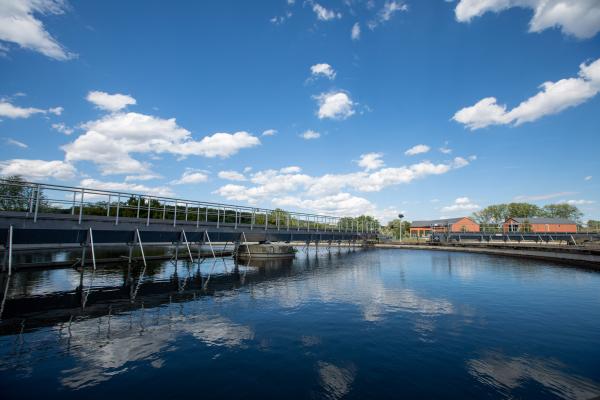
The JRC has released a new certified reference material (CRM) for the surveillance of SARS-CoV-2, the virus that causes COVID-19. This innovative tool helps laboratories ensure that their polymerase chain reaction (PCR)-based assays for detecting of SARS-CoV-2 are reliable and accurate and harmonised across different laboratories.
The new reference material is a rearranged tiny piece of the viral RNA genome, specifically a single-stranded RNA (ssRNA) which was produced by synthesis. It includes five regions of the SARS-CoV-2 genome, providing reliability for detection because these regions are less likely to mutate over time. It also contains a part of the human RNase P gene, which helps controlling that the analysis is performed correctly.
Better storage capacities
The JRC's certified reference material is the first of its kind in the EU. It has been certified for its RNA identity and copy number concentration, as well as its long-term stability thanks to Imagene's innovative encapsulation technology. This technology ensures unparalleled stability of nucleic acids.
The RNA is encapsulated in RNAshell laser-sealed metallic capsules, which are hermetically sealed in an anhydrous and anoxic atmosphere, guaranteeing reliable preservation. As a result, the RNA can be stored at 4°C and shipped at room temperature, offering greater convenience and practicality for users.
Completion of a five-year journey
The release of this certified reference material marks the completion of a five-year journey for the JRC, which has been working on COVID-19 reference materials and developing novel PCR-based assays since the start of the pandemic.
In April 2020, the JRC released a very first control material worldwide to facilitate the quality control of the detection of SARS-CoV-2 in testing laboratories. Since then, this material has been used by a large number of laboratories worldwide to control the quality of their data.
But the JRC's efforts have also been directed towards the development of novel assays in response to the virus evolution. For example, in December 2021, JRC scientists developed an Omicron-specific detection method, which helped combat the rapid spread of the variant worldwide. In January 2023, JRC scientists made a significant breakthrough by developing a universal detection assay capable of identifying all current and likely future SARS-CoV-2 variants. This innovative approach targets conserved regions of the virus that are less prone to mutation, ensuring its effectiveness even as new variants emerge.
Building on this success, JRC scientists developed in 2024 a new assay specifically designed to detect the Ba.2.86 sublineages, also known with the nickname of Pirola.
The new certified reference material is designed to work with different types of tests, including those recommended by the World Health Organization (WHO). It is also compatible with the JRC's existing detection methods, making it a valuable addition to the toolkit for laboratories and public health authorities.
Wastewater surveillance
These detection methods have far-reaching applications, particularly in the realm of wastewater surveillance. As we navigate the post-COVID era, wastewater surveillance offers a valuable solution for tracking the circulation of the virus within specific communities and monitoring its evolution.
The JRC's work on COVID-19 reference materials has been instrumental in supporting the EU's response to the pandemic, and this new material is a valuable addition to the toolkit.
The JRC has continued to follow SARS-CoV-2's evolution by developing critical diagnostic tools for improved surveillance and monitoring purposes. As well as helping to curtail the ever-evolving health threats from SARS-CoV-2, this work also strategically prepares our EU to face potential future disease outbreaks.
Related links
Details
- Publication date
- 4 February 2025
- Author
- Joint Research Centre
- JRC portfolios




